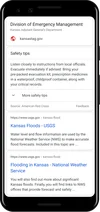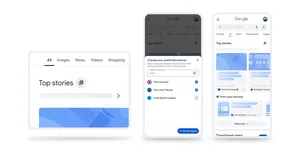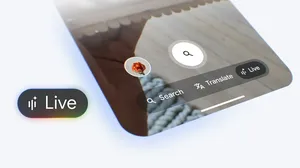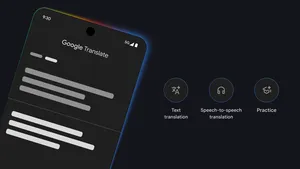Natural disaster safety tips: a Q&A with the Red Cross
In moments like a growing wildfire or a trembling earthquake, having access to high-quality information and actionable safety tips is critical. The American Red Cross and their Global Disaster Preparedness Center developed an open sourced platform for developers called the WhatNow Service—a data feed of global safety tips for over 20 different disaster types. Supported by a $250,000 Google.org grant, the Red Cross translated these safety tips and adapted the recommendations based on local context and risk.
To make this information even more accessible, when people come to Google Search looking for information about a natural disaster near them, they’ll now find these localized safety tips in the SOS alerts we show during times of crisis.

We sat down to talk with Omar Abou-Samra, who leads the Red Cross’s Global Disaster Preparedness Center, to learn more about the development of these safety tips and how technology has changed the way people prepare for natural disasters.
Related: Mapping wildfires with the power of satellite data
Can you share a bit about the process behind how safety recommendations are developed?
We’ve worked with social scientists, climate scientists, behavioral researchers and humanitarian aid professionals to identify key messages and actions that people can take before, during and after a crisis. The blend of practical experience with scientific and social research has yielded simple and actionable safety messages that people can trust in the event of an emergency like an earthquake, wildfire, hurricane or flash flood. Sometimes these are simple actions like listening for more information from local authorities or following evacuation orders. Other messages are practical things like moving valuables to safety if you’re near an area that may flood or preparing an emergency kit to keep nearby.
How do you ensure these safety tips are relevant for people across multiple countries?
We work with a network of 192 Red Cross and Red Crescent societies around the globe—each one operates in its own language, and understands unique local challenges and needs. We gave each partner a set of standard, evidence-based messages for 20 different hazards across 6 different time scales (mitigation, seasonal forecast, watch, warning, immediate, and recovery). This localization process included consultation with their government partners to finalize the messages that we’re sharing with the public.
How, if at all, have these recommendations changed with the impact of COVID-19?
As one example, safety tips now advise having additional items in emergency kits—such as hand sanitizer and cloth face coverings. It will be important to have these on hand so that people can continue being safe, and keeping their neighbors safe, in case they need to evacuate their homes and stay in close proximity to others.
What are some of the top challenges in communicating disaster safety information to the public?
Trust and consistency are two of the biggest challenges. Every person accesses information through many different channels. There’s a high volume of content to navigate, which can leave people confused or even unaware of what to do when there is an emergency. With the Red Cross safety messages that can be delivered through Google SOS alerts and by an API to other channels, we’re offering consistent, evidence-based safety messages prepared by a trusted source.
Now that we’re in hurricane and wildfire seasons, what’s the number one piece of advice you can give to readers to stay safe?
The most important thing is to have a plan and make sure you and your loved ones know what to do when there’s an emergency. This includes identifying a trusted source of information, knowing and practicing the steps you will take in an emergency and identifying the items and must-haves you may need for your recovery.






